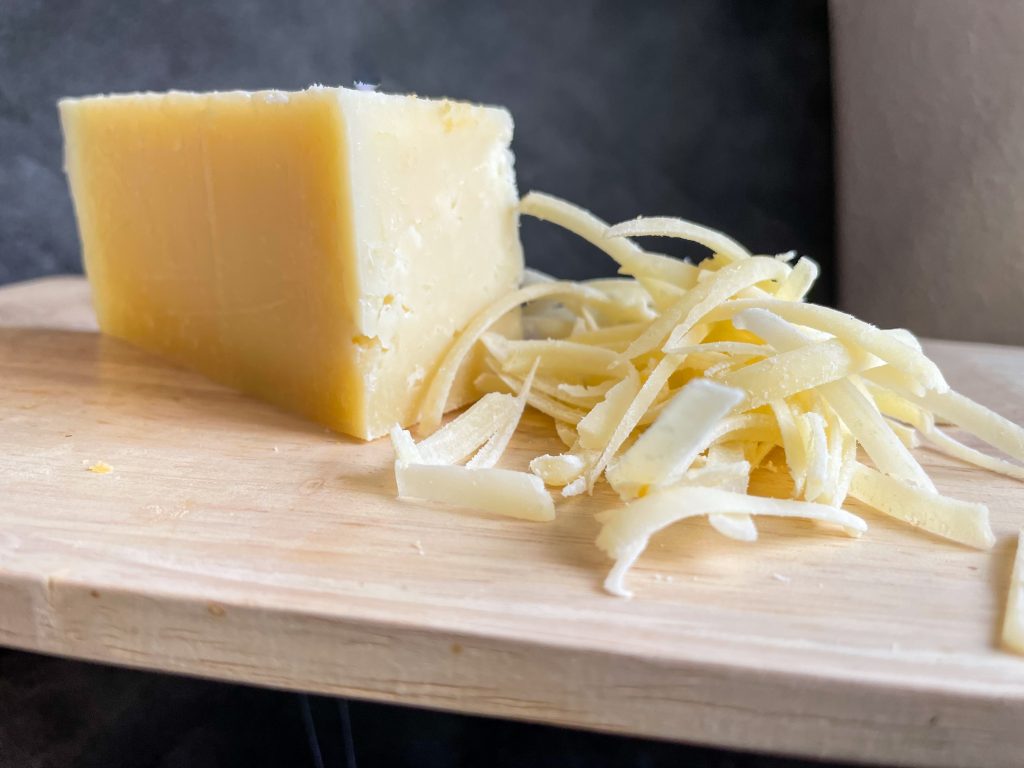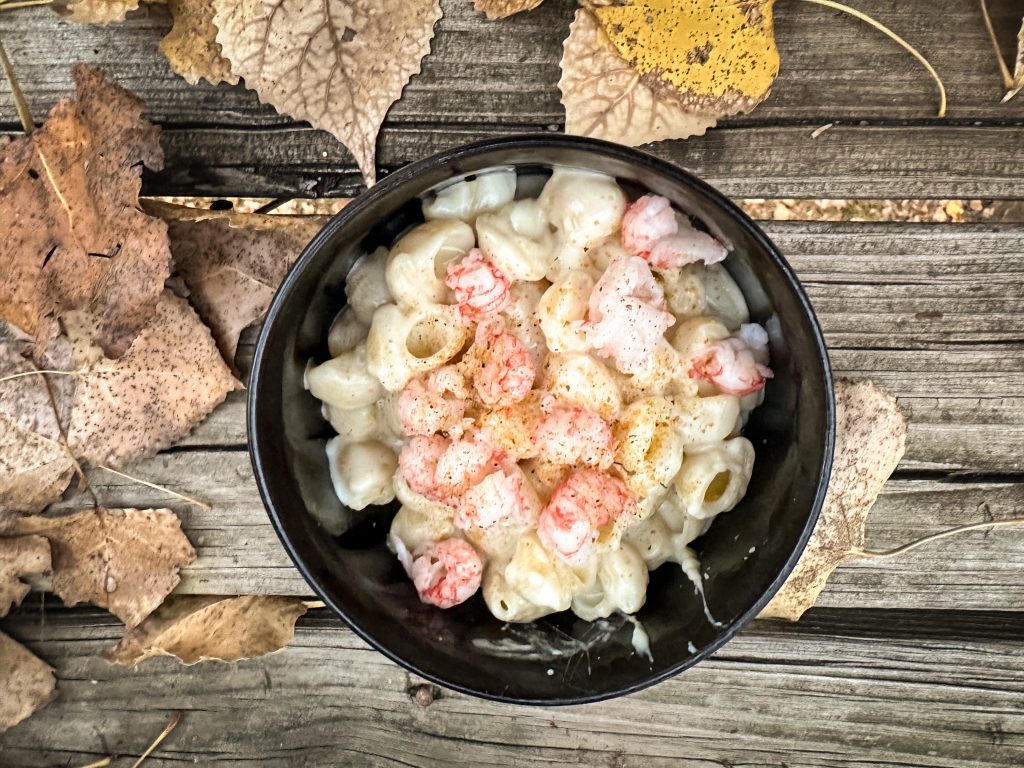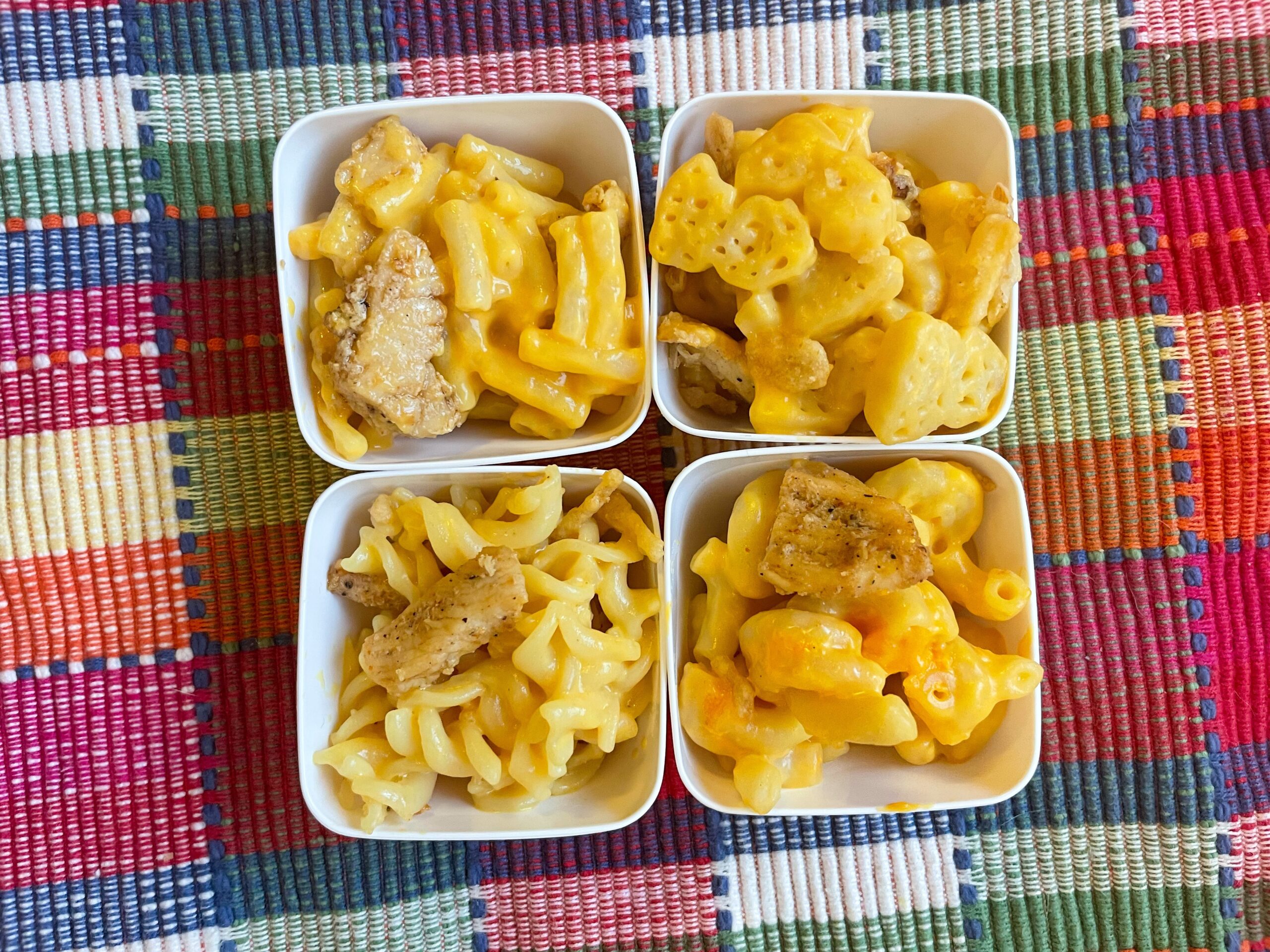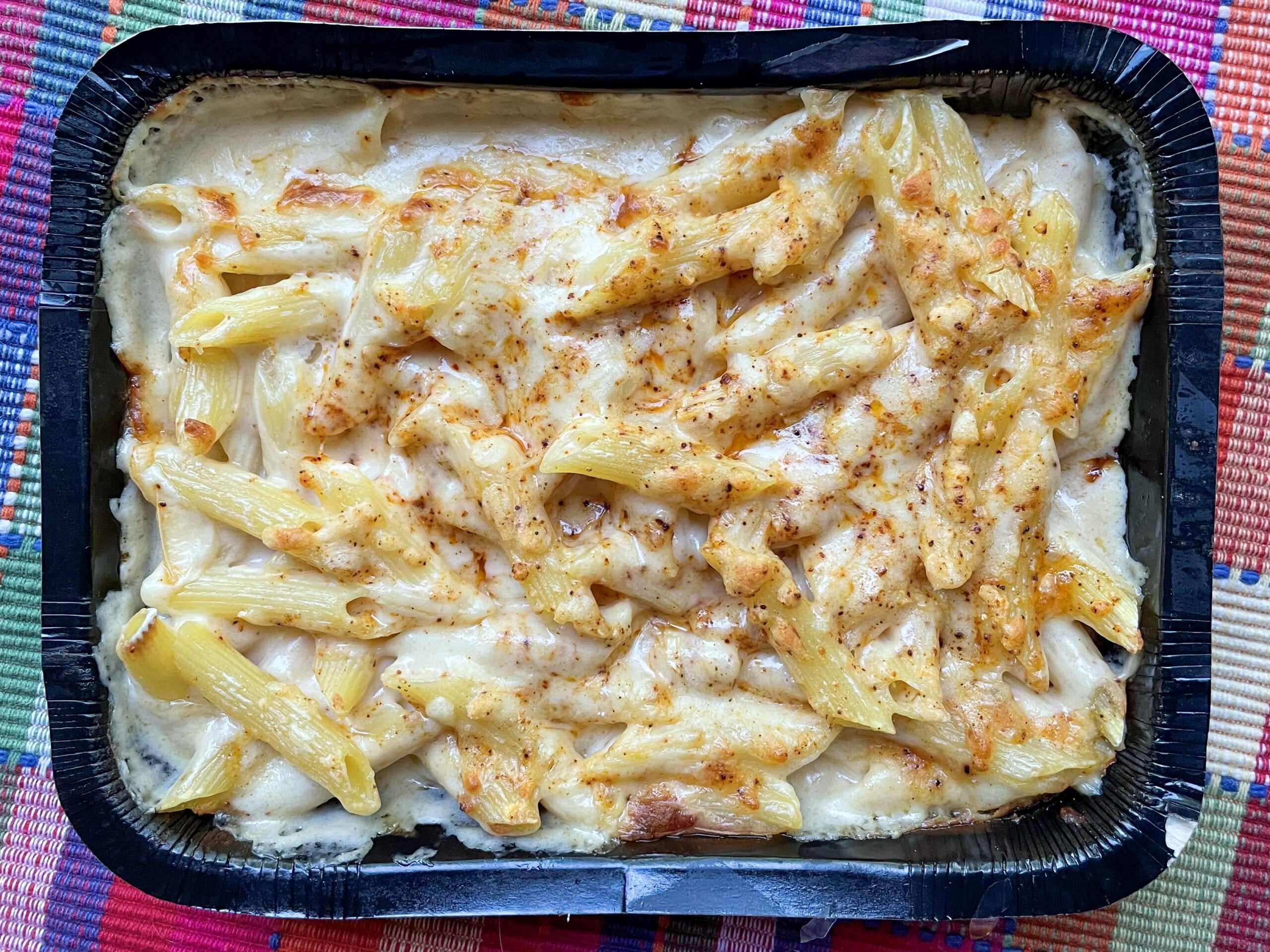
Parmesan cheese is one of the most well-known cheeses in the world. One of my favorite cheeses for mac and cheese, Parmesan is a great option for cooking. It’s the cheese that waiters grate over your plate at Olive Garden and the one you see in viral videos where chefs toss pasta in giant cheese wheels.
What is Parmesan Cheese?
Parmesan is a hard Italian cheese from the Parma region. It’s known for its nutty, savory flavor and crumbly texture. True Parmigiano-Reggiano is aged for at least 12 months, with some wheels aged as long as 48 months. This gives it a deeper, richer flavor. Unlike softer cheeses, Parmesan doesn’t fully melt but forms crispy golden layers when baked. It does have an edible rind that can be used to add flavor to soups and sauces.
How to Use Parmesan Cheese in Mac and Cheese
I balancing opener and closer cheeses helps round out the flavor of mac and cheese. You can learn more about my mac and cheese theory in How to Use Cheese in Mac and Cheese. Closer cheeses are those whose flavors emerge at the end of the bite, lingering to add depth to mac and cheese.
Parmesan is one of my favorite closer options. It’s relatively consistent in flavor, and it’s easy to get your hands on. Parmesan offers a salty, nutty flavor that enhances the final taste of mac and cheese without overwhelming other ingredients. I keep Parmesan on hand as a reliable closer when trying new cheeses. Having both an opener and closer available lets me experiment with different cheese while ensuring I can always create a balanced, creamy mac and cheese.
Parmesan’s Roles in Mac and Cheese
Parmesan shines in three distinct roles in mac and cheese. Whether it’s featured in a sauce, sprinkled as a finishing touch, or crisped for texture, it elevates mac and cheese beautifully. Thanks to its bold flavor and satisfying texture, Parmesan adds depth, sharpness, or even a satisfying crunch to mac and cheese.
Mix Parmesan into the Sauce
Parmesan makes a great closer cheese and adds savory, nutty notes to your sauce. Pair it with an opener cheese like Cheddar or Havarti for a flavorful, well-balanced mac and cheese. For best results, grate it fresh just before stirring it into the sauce.
Sprinkle Parmesan as a Finishing Touch
Finish your mac and cheese with a sprinkling of fresh grated Parmesan. This will enhance the cheesiness of your sauce, even if it contains other cheeses. This works great with both stovetop and baked mac and cheese. If you add it just before baking, the cheese will add a light, crispy finish. When adding to stovetop mac and cheese, it will add a bold salty hit of flavor.
Crisp Parmesan for Added Texture
You can also crisp a tablespoon in a nonstick frying pan on medium heat until golden brown, creating a crunchy bite that adds texture to your dish. Be sure to watch it closely, the magic happens fast! Serve atop individual servings for beautiful presentation or crumble across the top for a fun, crispy texture.
Parmesan is a star in mac and cheese no matter how you use it. Let me know your favorite way to use Parmesan in the comments!
Legal Status of Parmigiano-Reggiano
In Italy, Parmigiano-Reggiano has a P.D.O. (Protected Designation of Origin) status. This means it must be produced in specific regions of Italy – Parma, Reggio Emilia, Modena, and parts of Bologna and Mantua. It must also use traditional methods and be aged at least 12 months. In the United States, Parmesan is not a regulated term, meaning cheeses with varying production methods, aging times, and ingredients can still use the name. This is why American Parmesan often has a milder flavor and different texture than authentic Parmigiano-Reggiano. In fact, the Parmigiano-Reggiano Consortium actively fights against imitation Parmesan worldwide, leading to legal battles over labeling in different countries. Some authentic Parmigiano-Reggiano wheels even contain a tiny microchip in the label, helping prevent theft and counterfeiting. Keeping this difference in mind is important when making mac and cheese. Authentic Parmigiano-Reggiano brings a stronger flavor and firmer texture than its American-style counterpart.
Why You Should Avoid Pre-Grated Parmesan
Freshly grated cheese naturally clumps together due to its moisture content. This is great when your goal is to have it melt cohesively into a recipe, but not so great when your goal is to have aesthetically pleasing individual shreds in a bag on a grocery store shelf. To prevent clumping, manufacturers include anti-caking agents and preservatives to maintain the cheese’s texture on store shelves. This is fine if you’re sprinkling it over a salad or eating it by the handful from the bag, but unfortunately this also prevents the cheese from melting smoothly into your dishes.
Alternatives to Parmesan Cheese
I love using Parmesan because it’s readily available and a great finishing flavor in mac and cheese. But if you’re looking for something a little different, these cheeses are excellent closer alternatives with similar bold, savory characteristics.
Romano Cheese
Romano is another hard, aged cheese that comes in several varieties but Pecorino Romano is the most well known. This cheese is made with sheep’s milk, making it a great introduction to cheeses from alternative species, and it has a sharper, tangier, and saltier flavor than Parmesan. It’s more intense so you can get by with using less Romano without overpowering the other cheeses in your dish.
Asiago
Asiago is another great closer cheese. It packs a strong flavor that balances well at the end of the bite. Asiago has a smoother texture than Parmesan, which helps it melt beautifully into sauces making it a great mac and cheese choice.
Aged Gouda
Gouda is a cheese that walks the line between opener and closer cheeses. Younger Goudas are smooth, mild opener cheeses that need to be paired with another finishing counterpart. Aged Goudas develop caramel notes and a firmer texture, making them a bold, flavorful closer cheese that work beautifully in a mac and cheese.






